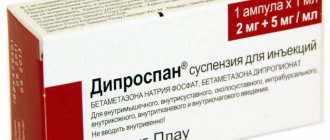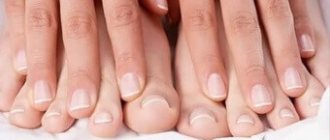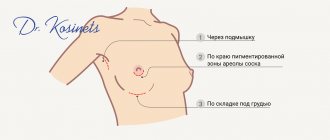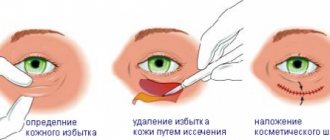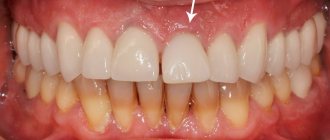Preparing for surgery
Before the planned intervention, the patient goes through a preliminary stage:
- He is examined, that is, he undergoes tests, does an ECG and fluorography. During preparation, X-rays, MRI and CT scans of the hand, vascular Dopplerography, ultrasonography, arthroscopy, and electromyography are also needed.
X-ray of the hands with rheumatoid arthritis. In the picture: periarticular osteoporosis, multiple cysts, narrowed joint spaces, erosion of articular surfaces.
- You should stop taking blood thinning medications 2 weeks before surgery. It is necessary to get rid of any infection and approach the intervention in good physical shape.
- At the same time, you need to give up alcohol and smoking. The hands and fingers are equipped with a large number of blood vessels and nerves. Bad habits can interfere with the healing of moving tissues.
Recovery
Therapeutic exercises
Rehabilitation of a broken thumb or other phalanx begins after the fixator is removed. Prolonged immobilization provokes muscle atrophy, therefore, to develop the joint, it is important to perform the following exercises:
- clenching the phalanges into a fist,
- drum your fingers on a hard surface, imitating playing the piano,
- pulling the wrist to the tip of the finger (“Caterpillar movement”),
- flexion-extension of the distal phalanx, helping with the healthy hand,
- kneading plasticine or dough with a brush,
- spreading and closing the fingers.
Physiotherapy
Rehabilitation after a broken finger includes the following procedures:
- UHF therapy,
- magnetic therapy,
- electrical stimulation method,
- electrophoresis,
- laser therapy,
- ultraviolet irradiation,
- exposure to ultrasound,
- diadynamic current treatment,
- warming wraps with paraffin or ozokerite.
The effects of methods on broken fingers are as follows:
- restore the mobility of the phalanges,
- promotes the production of joint fluid,
- accelerate tissue and cartilage regeneration,
- relieve symptoms of inflammation and swelling,
- saturate tissues with oxygen,
- improve metabolic processes in the joint,
- strengthen muscles.
Maintaining hygiene
Marginal fractures of the nail phalanx and other joints of the finger require prolonged wearing of a cast. During this period, there is almost no contact of the skin with air, which is why the upper layers of the epidermis peel off. The space between the fingers requires special attention. After removing the fixative, it is recommended to take baths with medicinal herbs that soothe the skin. After the procedure, you should carefully remove dead particles of the epidermis and apply baby cream. It is recommended to treat the interdigital space with antifungal agents.
Traditional methods
You can treat and restore a finger after a fracture with a compress from comfrey root, which is prepared according to the following recipe:
- Take 5 tbsp. l. crushed plant roots.
- Pour in hot water so that it slightly covers the raw material.
- Apply the product to the broken phalanx, bandage and wear for several hours.
If the finger is broken and hurts, a 10-day course of treatment from ivy bud is recommended, the recipe for which is as follows:
- Child's finger fracture
- Take 60 g of herb and pour 1 liter of water.
- Place over medium heat and simmer in a water bath for 15 minutes.
- Remove from heat, cool and filter.
- Soak gauze in the resulting broth and apply for several hours.
Ways to solve the problem
The type of operation depends on the pathology, its characteristics and many other factors. The doctor will choose a method to obtain the maximum aesthetic effect and restore the functions of the hand and fingers.
For stenosing tenosynovitis
Intervention for stenosing tendovaginitis is carried out under local or general anesthesia, it depends on the scale of the problem. The surgeon performs the following actions:
- after antiseptic treatment of the skin, an incision is made along the transverse fold of the palm;
- cuts the altered ligament or removes its central section, freeing the thickened tendon;
- if necessary, excises its abnormally enlarged part;
- the wound is sutured and a bandage is applied.
After this, the tendon is able to move freely, which leads to straightening of the finger.
For arthritis
You can return your fingers to their former appearance and mobility to their joints with rheumatoid arthritis using endoprosthetics:
- Finger joint endoprosthesis
provides access to the articular capsule through an incision on the dorsal-lateral surface of the hand; - after opening it, part of the head of the bones is removed;
- An implant is placed into the expanded space.
In earlier stages of the disease, surgery only involves excision of abnormal tissue from the joints or around the tendon.
With Dupuytren's contracture
Cicatricial changes in the fascia, depending on the stage of development of the disease, require:
- Aponeurotomy . In this case, the contracture is cut, as a result of which the tendons are released and the palm straightens. The operation can be done with a needle or openly.
- Aponeurectomy . With it, tendons are released using methods of total or partial removal of scar tissue.
With syndactyly
Surgery to separate fused fingers is done in childhood. During the intervention, a wave-shaped incision is made, and then the wound is stitched or closed with a skin flap taken from other parts of the body. The complexity of the operation is determined by the characteristics of the tissue. If bone or tendon-muscle plastic surgery is needed, it is carried out in several stages.
With polydactyly
The excess segment is removed during an operation, which has features depending on the structure of the process. It is excised:
- without affecting the main finger;
- with his osteotomy;
- with skin, tendon and bone grafting.
The first option of intervention is more often indicated, since the abnormal area is usually devoid of bone.
- Fracture of the nail phalanx of the big toe: how long does it take to heal and is plaster needed?
In the absence of a finger or its segment
Reconstructive surgery is performed using an implant or a toe transplanted from the foot. Moreover, in the second case, it is possible to combine amputation and transplantation in one intervention. Over time, the transplanted finger not only becomes similar to its “native” ones, but also functions normally.
Amputation of a finger or fingers: indications, procedure, postoperative period
Amputation of a finger or fingers is a fairly common operation. Hands and fingers have important functions in human life.
But they are very often damaged. It happens that such injuries lead to loss of ability to work and even disability. Treating these injuries is difficult.
If safety precautions and precautions are not followed, the phalanx or finger may be completely torn off. Most often this happens in production.
But there are also transport or household injuries. Traumatic amputation is accompanied by severe blood loss and acute pain.
Types of traumatic amputation:
- chopped;
- scalped;
- when exposed to a power saw;
- chopped;
- mixed.
When examining the damage, the surgeon always evaluates whether it is possible to save the limb or whether amputation will have to be performed.
The further tactics of medical care will depend on the cause of the injury.
Amputation of a finger is carried out only when it is impossible to apply a more loyal treatment or when the lesion is too extensive.
Cases in which surgery is performed
- finger separations, multiple bone fractures;
- burns and severe frostbite;
- necrosis of fingers in diabetes mellitus;
- sepsis, abscess, gangrene;
- malignant tumors;
- elderly age of the victim.
First aid and storage of an amputated limb
The initial goal when an injury occurs is to save the person's life. You must immediately report the incident to the rescue service.
Check whether the person is breathing and has a heartbeat, and eliminate the cause of the injury. If blood is flowing from the wound, it must be stopped and a bandage applied. The hand must be kept motionless. Give the victim a sweet drink and put him to bed. And only after taking these measures, begin to search for the severed limb.
It happens that amputated fingers are reattached and in the future they are fully functional. It is important to remember that before the amputated limb can be reattached, it must be cooled.
At temperatures up to four degrees, fingers can be stored for 16 hours. If stored at a temperature warmer than four degrees, the time is reduced to 8 hours.
The severed finger must be wrapped in sterile material and placed in a container so that oxygen gets in; it must not be pulled tight. Place the container in ice. Attach a cover note indicating the time of amputation.
If there is a partial amputation of a finger or damage to the tendons, there is no need to completely tear off the hanging element. It needs to be fixed and ice applied.
If amputation occurs, the person becomes disabled, so surgeons try to the last to save the finger. When this cannot be done, surgery is performed with the patient's permission.
Read on the topic - How amputation of the lower extremities is performed. Indications, types, possible complications
Permission is not required only if the operation is vital.
Preparing for surgery
Prepare for surgery based on the patient's condition. During planned operations, blood tests, urine tests, x-rays, and vascular ultrasound are prescribed. When surgery is urgent, antibacterial agents are prescribed to reduce the risk of intoxication.
Generally, local anesthesia is used for such operations; it is safer.
During preparation for finger disarticulation, a conversation is held with the person about the operation itself, the results and consequences.
If necessary, it is recommended to consult a psychologist to reduce stress levels and post-operative depression.
Finger amputation - nuances
The size of the amputation is determined by the nature of the injury. It is necessary to ensure that after the operation the stump can move, is painless, and does not thicken at the end.
When carrying out the operation, the following nuances are taken into account:
- During disarticulation, they try to preserve the length of the thumb and little finger as much as possible; even short stumps are preserved on the remaining fingers.
- If it is impossible to maintain the required size of the stump, the finger is removed completely.
- If there is a high risk of infection or gangrene, complete amputation is performed.
- During the amputation period, the person’s profession is taken into account.
- The cosmetic result is important, and sometimes it is of primary importance when choosing the type of operation.
Exarticulation technique
Disarticulation is a surgical operation during which part of a limb is removed. It is performed in case of urgent need.
When performing disarticulation:
- give anesthesia
- healthy fingers are protected as much as possible, and the damaged one is strongly bent and an incision is made on the inside
- A vein or artery is ligated
- After this, the lateral ligaments are cut and the phalanx is passed through the incision.
- An additional painkiller is administered and all other elements are crossed.
- The articular cartilage is removed.
- A flap of skin is applied to the wound. The seams are always located on the inside. During amputation, tissue is always saved as much as possible; flaps are taken from the skin of the palm.
In the postoperative period, the wound must be properly cared for and hand functions must be trained. Physiotherapy and exercises are prescribed to help the patient learn to work with the stump.
In order for recovery to occur as quickly as possible, you need to follow all recommendations and prescriptions and take analgesics.
Postoperative period
In the first few days after amputation, the patient will need pain medications. Then the inflammation will decrease and the wound will crust over.
After two weeks, the wound no longer hurts, dressings are painless.
If pain persists longer, it is necessary to take an x-ray and extend the course of antibiotics. Sutures are removed 3–4 weeks after surgery.
It is recommended to apply bandages with Betadine ointment before removing the stitches.
Source: https://MedOperacii.com/orto/amputaciya-palcev-ruk.html
Types of fractures
A fracture of the little finger is the most common type, since it is the thinnest and is located on the edge of the hand.
A fracture of the thumb occurs less frequently, but this is the most dangerous type, since the process of restoring working capacity is very complicated. This injury is usually accompanied by a dislocation and occurs due to too much reverse extension.
If the ring finger on your hand has suffered from a fracture, you should carefully approach the course of recovery, since its injury can lead to problems in the functionality of the entire hand. Fractures of the middle finger and fractures of the index finger are less dangerous, but if they do not heal properly, they lead to impaired motor skills and other complications.
A marginal fracture of the fingertip often occurs due to negligence when working with tools or heavy weights.
Subperiosteal fracture is classified as a separate type. It usually occurs in children, while the periosteum remains intact, because at this age it is still quite soft and flexible. It is difficult to detect, but it heals quickly and does not require reposition.
With offset
Fractures are divided into two groups depending on how the fragments are located: with displacement, without displacement. A displaced finger fracture can be with divergence or overlap of fragments.
- How long does it take for a Finger Fracture to heal, How to speed it up
Based on the number of fragments, they are divided into: non-fragmented, single-, double- and multi-fragmented. Based on the shape of the fault line, transverse, helical, oblique, T-shaped, S-shaped and other types of damage are distinguished. According to location, there are periarticular, intra-articular and extra-articular or fractures of the diaphyseal part.
A displaced injury can take 3 to 6 weeks to heal. It’s easier to say how long it takes for a fracture to heal without displacement; in the absence of complications, it takes 2-3 weeks; it recovers completely in a month.
Closed
A closed fracture is an internal injury in which the integrity of the skin is not compromised. This type of injury is less traumatic and does not threaten infection.
Open
An open fracture is an injury in which the skin is broken and the bone is often visible. The victim may experience bleeding of varying degrees. Dangerous due to the possibility of infection and serious injury to nerves, blood vessels, ligaments, etc.
Phalanx
Most often, individual phalanges of the finger are affected by fractures. Fractures are distinguished:
- proximal phalanx,
- middle phalanx,
- distal phalanx (first).
Injury to the main phalanx is more common than others. A fracture of the nail phalanx often occurs due to carelessness when working with a hammer or other tools. Trauma to the upper phalanx is characterized by massive bone fragmentation and skin damage, which can lead to infection. Interesting to read about the fracture of the hand.
Hands are being restored using a unique technology in a Moscow hospital
At the 29th Bauman City Hospital, surgeons help restore damaged hands. Not only transplantation is used, but also a minimally invasive method. They use a solution that works like glue - a unique technology that is used only in our country. A month after surgery, patients can again lead an active lifestyle.
Kidney problems were discussed at the Botkin Hospital
Sobyanin: healthcare in Moscow will reach a new level
How very young patients are saved in a Moscow hospital
Vladimir will have to lie on the operating table for more than 6 hours. His case is special. A young man has been practicing yoga for several years and once during a class, without calculating the load, he injured his arm. But he was not prescribed treatment then. And three years later the pain became unbearable.
It turned out that one of the bones of the hand had split into several parts and had shifted. The surgeons decided to replace the dead bone with a similar-shaped piece of graft from the patient’s knee joint.
"I was afraid! I say: “I need my knee too! How so?" But they explained to me that they take it from a place where there is no load. So everything is fine,” says Vladimir Kucheryavykh.
It’s normal, because Vladimir managed to see doctors. Any longer and it would have been impossible to help the patient.
“A small bone is supplied with small vessels. So, the uniqueness lies in transferring this bone and suturing this vessel, a millimeter or less, with the vessels on the arm,” explains the head of the department of surgery and microsurgery of the hand, City Clinical Hospital No. 29 named after. Bauman Victor Melnikov.
Jewelry work was carried out under a microscope, but in an open way. And in the neighboring operating room they use a minimally invasive method. The arm is suspended on a traction stand to stretch the joint. Under local anesthesia, this man must have the crack in the cyst repaired within an hour and a half.
It is filled with a so-called natural collagen membrane. It is administered through special punctures on the patient’s arm. The graft - a piece of bone from the hip joint - is broken into small pieces. After the crumbs are mixed with blood, a solution is obtained that works like glue. They fill the cracked area and secure everything with knitting needles.
“Our method is unique. It is not used anywhere in Russia, only we use it in our hospital,” says the head of the arthroscopy room at the upper limb surgery center of City Clinical Hospital No. 29 named after. Bauman Dmitry Murin.
As a result, the effect is achieved without tissue injury, and the body recovers quickly and naturally. The recipe for a special solution that helps bones heal faster is the secret of doctors.
Elena Makarova, Sergei Titov and Mikhail Zhuchkov. "TV Center".
Recovery and care after finger correction
Upon completion of any type of operation, a rehabilitation period begins. Its duration is determined by the scale of changes. There are several common points in recovery:
- the hand must be fixed in a certain position and not be able to move;
- It is important to maintain sterility, that is, treatment of sutures, regular dressings;
- when the first healing period has passed, physiotherapy is necessary, that is, massage, electrical procedure, phonophoresis, applications, special exercises;
- During the entire recovery period, you should give up bad habits.
After minimal interventions, rehabilitation usually lasts up to 3 weeks. A finger transplant requires several months to recover.
We recommend reading about hand mesotherapy. You will learn about the features and advantages of this procedure, the necessary examinations before the manipulation, the mesotherapy technique, and the results after. And here is more information about the procedure for restoring youth to hands - biorevitalization.
Causes
An extensor tendon rupture is a more common tendon injury than others. The extensors of the fingers have weak fixation to the bone, and the thickness of the tendons is small.
There are two main mechanisms of damage and one additional:
- strong axial load on the finger (playing with the ball);
- blow to the rear (when the tendon gets hit);
- cut and lacerated wounds (the cut line passes through the tendon).
A feature of cut tendon injuries is that the cut may be shallow (the tendon is located just under the thin skin). It happens in everyday life when people prepare food or chop something.
IMPORTANT! The risk of getting an extensor tear increases sharply during physical activity without first warming up the hands and fingers.
Postoperative recovery period
Rehabilitation includes several points:
- Elimination of movement of the affected area (a plaster cast is used for this).
- Physiotherapy course.
- Therapeutic gymnastics with a gradual increase in load.
Exercises are necessary to normalize blood circulation in the hand, tone the muscles, develop hand movements, and restore motor skills. Only if all points of the recovery plan are followed will mobility and all functions be fully restored.
The operation can be performed in a modern clinic of the Central Clinical Hospital of the Russian Academy of Sciences in Moscow. Making an appointment and any required information is available by phone or on the clinic’s website.
Author: Averina Olesya Valerievna, candidate of medical sciences, pathologist, teacher of the department of pathological anatomy and pathological physiology
Surgery on the tendon of the hand and fingers is indicated for patients with injuries that resulted in tendon rupture and impaired finger mobility. Such interventions are considered complex, have their own specifics, require proper and long-term rehabilitation, on which the possibility of full or partial restoration of the original range of movements, fine motor skills, and writing depends.
Interventions on tendons are often carried out, because the hands are constantly used in everyday life and professional activities, and therefore are susceptible to various types of damage. According to statistics, almost a third of all hand injuries occur with a violation of the integrity of the tendon.
Any injuries to the tendons of the fingers or hand require surgical correction, unlike, for example, injuries to the shoulder joint. Surgery on the shoulder tendon is performed only in particularly severe cases, and for most patients, immobilization and drug therapy are sufficient.
In practice, surgeons most often encounter injuries to the flexor tendons, which are located relatively superficially. Less commonly, the nerves of the fingers are involved, and in third place in frequency are injuries to the extensor tendons, and the latter can rupture from the tips of the fingers to the level of the middle third of the forearm.
The tendons of the fingers have the same structure, the only difference is in their thickness and shape at different levels, and therefore surgeons conventionally distinguish five zones of injury, according to which the operations acquire some technical features.
Very great difficulties in treatment arise when tendons are damaged, which are combined with a violation of the integrity of blood vessels and nerves and, especially, fractures of the phalanges of the fingers. Such injuries require complex plastic surgeries, which can only be done by a highly qualified surgeon specializing in surgical pathology of the hands.
Contour plastic surgery of hands
Sometimes the patient is not worried about the limited functionality of the hands, but only about the appearance. Of all the problems, this one has the easiest solution - contouring. The method involves introducing hyaluronic acid into the skin. The specialist makes injections, injecting filler evenly over the entire area of the hands - from their outer side to the fingers.
After the procedure, the tendons and veins stop protruding through the skin, and the hands do not look bony and dry. Their surface becomes smooth, wrinkles and age-related hyperpigmentation disappear. The method is also used to prevent pronounced aging of the hands. The effect lasts up to 8 - 12 months. Then the injected drug is absorbed, and a new procedure needs to be done.
We recommend reading about hand plastic surgery. You will learn about surgical methods for treating arthritis, stenosing tenosynovitis, Dupuytren's contracture, syndactyly, polydactyly, and more. And here is more information about the surgical treatment of syndactyly.
Brushes were once the “calling card” of a person: they were used to determine his origin and predict his fate. Now the idea of this part of the body is not so primitive, but there are many more methods for maintaining the health and beauty of hands and fingers. If there are problems, you must definitely use the appropriate plastic surgery method.
Indications for finger reconstruction
Reconstructive hand surgery can help correct a wide range of functional and aesthetic problems. Hand reconstruction can repair tendons after injuries, birth defects, and joint deformities caused by rheumatoid arthritis. It can also relieve the pain and pressure of carpal tunnel syndrome, and treat Dupuytren's contracture, in which thick scars form on the palm and spread to the fingers.
People with anti-corruption speech on the tip of their tongue, but living with disability benefits or any other “bag-thing” in front of questionable conditions. Indifferent to everyday distortions, they do not create a causal relationship. Now these relationships, spread by people, are repeated in their representatives. The boiler is the same, you cannot separate.
They do not come from another galaxy, but from the same environment, from a “culture” of corruption based on civil society. They say the example should be from above. Right, but who is it? Public power or the people who elect him? Carpal tunnel syndrome is very common in women over 40 years of age.
Carpal tunnel syndrome
Carpal tunnel syndrome is a condition caused by compression of the median nerve in the wrist where it passes through a narrow area called the carpal tunnel. As a result, tingling, numbness of the fingers, weakness, pain and impaired hand function are observed.
Carpal tunnel syndrome is a very common problem, especially due to people sitting at the computer for long hours.
This results in numbness and tingling, followed by real pain in the arm, often radiating to the forearm, elbow or even shoulder. These sensory signs often awaken the patient during the night. They may touch a finger or several fingers, but usually they fall with a finger. One or two hands may be used.
These signs usually lead to consultations after several weeks or months of evolution. At the stage of evolution, embarrassment arises during the small catch of the current life. This discomfort is associated both with progressive numbness of the thumb and fingers of the forceps, and with paralysis of the muscles of the base of the thumb, which “melts”.
In this case, as a rule, numbness occurs in the thumb, middle and index fingers. Numbness often begins at night, but can progress to daytime numbness and sometimes pain. The disease is typical for people aged 30-40 years.
The development of carpal tunnel syndrome can be caused by a number of factors, which include:
Carpal tunnel syndrome is associated with compression of the median nerve at the wrist. The median nerve is the one that controls sensation in the thumb and 2 or 3 adjacent fingers, and which controls certain muscles at the base of the thumb. At the wrist and heel of the hand, it joins the palm and digitorum flexor tendons at the “wrist.” This channel is formed behind the carp's small bones, which are shaped like a groove; this groove is closed in front by a very thick ligament, the “anterior carpal ligament.”
Anterior carpal ligament of carp. Carpal tunnel syndrome is associated with increased pressure in this tunnel for a reason that is unknown in the vast majority of cases. Everything just happens as if the content of this channel was “straightforward”. This does not interfere with the play of the flexor tendon, but it does interfere with the passage of the median nerve where it is compressed by the ligament. In the final stage, chronic compression of the nerve can eventually sweep through and destroy it completely, irreversibly.
- nerve damage in the wrist,
- frequently repeated monotonous movements,
- fluid retention during pregnancy,
- rheumatoid arthritis,
- joint deformities of various types.
Severe cases of carpal tunnel syndrome may require surgery. Surgical procedures typically involve resection of tissue that is pressing on the nerve in order to relieve excess pressure on the median nerve. Surgical intervention provides a cure in 90% of cases. The procedure is usually performed under local anesthesia. The surgeon may make an incision from the middle of the palm to the wrist. Some surgeons may choose a minimally invasive endoscopic procedure. The sutures are removed 2 weeks after surgery.
Stenosing tenosynovitis
Stenosing tenosynovitis, known as trigger finger syndrome, is diagnosed when a finger becomes stuck in a bent position and then releases with a trigger-like click (also known as cock finger). The mobility of the finger is limited by swelling of the tendon and synovial sheath. Typically, tendons glide smoothly through a sheath of protective tissue called synovium. When the tendon becomes inflamed, movement through the synovium is difficult due to swelling.
In severe cases, the fingers may be locked in a bent position, and this is often very painful. Symptoms include hardness, pain, and a clicking sound when pressed. Sometimes a nodule develops at the very base of the finger.
Those at risk include women, patients with diabetes, people over 40, and those who have hobbies that require repetitive finger movements, such as musicians. Trigger finger syndrome can develop as a result of another disease, such as arthritis.
Snapping finger syndrome can be treated with surgery under local anesthesia to release the tendon and allow it to glide smoothly. This relatively minor but effective procedure is used only after other treatments have failed. The sutures are removed 2 weeks after surgery. After surgery, patients can return to daily activities within a few weeks.
Rheumatoid arthritis
Rheumatoid arthritis is an autoimmune disease that occurs when the body goes to war against its own joints, including the finger joints. Inflammation of the joints interferes with the movement of the fingers and disfigures the appearance of the hands. The joints of the fingers have a deformed appearance, and the fingers are forced to exist in abnormally bent positions. The swollen tissue can destroy the ligaments that hold joints together and cause damage to cartilage and bone. The swollen tissue can even damage the tendons, causing them to rupture. If the tendon is torn, the patient cannot bend or straighten the finger.
Surgery may help when therapy is no longer able to control the disease.
Severe cases of rheumatoid arthritis often require hand surgery to restore movement in the finger joints.
The purpose of surgery is to reduce pain, improve finger function, or repair damage caused by the disease. Surgery may involve removing swollen tissue from the joints or around the tendon, which can reduce pain and prevent more damage to the tendon. If the tendon has already been damaged, surgery may be done to repair the damage. Sometimes damaged articular surfaces in the fingers are replaced with implants made of plastic or metal. Surgical procedures performed on rheumatoid hands are often complex and require post-operative care, and the recovery period varies depending on the procedure. However, it is important to remember that surgery does not eliminate the disease itself.
Dupuytren's contracture is an inherited thickening of the tough tissue (fascia) that lies under the skin of the palm. This is an inherited problem that causes the fingers to gradually bend toward the palm with an inability to straighten them. The thickened tissue deposits can range from small clumps to very thick bands that can eventually pull the fingers toward the palm due to contractures.
The operation involves the removal of these contractile tissues and is performed under general anesthesia. The procedure to remove the diseased tissue, or subcutaneous fasciotomy, can be partial or complete. In a complete fasciotomy, tissue from the palm is completely removed and a skin graft from another part of the body is used to graft it onto the palm. The surgeon cuts and separates strips of thickened tissue, freeing the tendons. The operation must be performed very precisely because the nerves that control the fingers are often tightly surrounded by abnormal tissue. The result of the operation will depend on the severity of the condition. You can often expect significant improvements in finger function, especially after physical therapy. Scars are thin and not noticeable enough.
Congenital deformities
The most common hand abnormalities in children are syndactyly (webbed fingers) and polydactyly (extra fingers).
Congenital hand defects can interfere with normal hand growth and ultimately cause problems with finger dexterity. A surgeon may perform plastic surgery as early as infancy to help the hand develop normally.
Syndactyly, the most common congenital abnormality of the hand, is the abnormal connection of the fingers to each other. The middle and ring fingers are most often fused. In approximately 50% of cases, syndactyly occurs on both hands. Syndactyly can be complete or incomplete, depending on the degree of connection of the fingers. With simple syndactyly, only the skin and soft tissues are connected, and with complex syndactyly, even bones are connected. Overall, syndactyly occurs in 1 in 2,500 newborns, of whom approximately 40% have a family history of syndactyly. Syndactyly is more common among the Caucasian ethnic group, and is twice as common among boys as among girls.
In cases of syndactyly, the fingers are separated using a zigzag incision and new areas are created by grafting a flap of skin from the back of the fingers, the groin area or the lower abdomen. When the little finger or thumb is affected, this surgery is done at about six months of age to avoid distortion of the adjacent fingers during growth, since the thumb and little fingers are shorter than the adjacent fingers. Otherwise, the operation is done at eighteen months.
In polydactyly, the extra digits are usually a small piece of soft tissue that can be easily removed. Sometimes the finger will contain bones but not joints. Rarely is the extra finger fully formed and functional.
Recovery and rehabilitation
How long a finger fracture takes to heal depends on its type. This may take from three to ten weeks.
After a broken finger, you need to wear a cast for 2 to 6 weeks, depending on its type.
When the bones heal, the braces are removed, and the person must undergo rehabilitation to fully restore the functionality of the hand. For this purpose they prescribe:
- therapeutic gymnastics exercises,
- massage,
- physiotherapy.
Also today, special fixators - orthoses - are widely used. They are comfortable, but it is important to ensure that the orthosis fits perfectly.
Physiotherapy
Full recovery after a fracture takes quite a long time. To speed up the process, you can perform special exercises:
- Before starting work, rub your hands vigorously to improve blood flow,
- rotate the brush in both directions,
- perform exercises aimed at developing fine motor skills (typing, sorting cereals, putting together puzzles, etc.),
- Exercises with an expander allow you to quickly develop your finger muscles.
It is also useful to read about wrist fractures.
Types of damage
Damage to the nerves of the hand is represented by the following groups.
- Complete rupture of a nerve is called neurotmesis. Surgical treatment is indicated. Recovery occurs over months or years depending on the severity of the damage.
- Partial rupture accompanied by various disorders - neuropraxia - occurs with closed injuries. A condition with preserved nerve sensitivity, when the lack of conduction is temporary.
- Neuropathy is a disorder resulting from a fracture, bruise or cut in the hand area.
- A pinched nerve occurs when the patient cannot bend the wrist. The little finger is completely immobilized, the ring finger is partially immobilized, the thumb moves with difficulty. The pain radiates to the little finger.
Reducing the length of the toes
There are several techniques that allow you to reduce the length of your toes and adjust their shape towards the anatomical one. The choice of technique should be carried out by the doctor, since it depends on the reason that caused the elongation of the fingers.
- Osteotomy of the metatarsal bone . Done if the patient has an abnormally long metatarsal bone
- Osteotomy of the phalanx . Done if only one phalanx of the finger is long
- Osteotomy of both metatarsal and phalanx . It is done if the finger is hammer-shaped and a painful corn has developed on it. This most often happens with severe transverse flat feet.
- Arthrodesis of the proximal interphalangeal joint . It is performed if the finger has a pronounced hammer-like shape and is difficult to move. This operation is also performed on women who will wear dress shoes a lot.
All of the above operations are quite simple and, as a rule, do not take longer than half an hour. They are done both on an outpatient basis and in a hospital - it depends on the individual characteristics and mood of the patient. Most often, the patient is sent home on the day of surgery.
Toe defects
IMPORTANT: Modern technologies make it possible to perform operations on the feet with minimal intervention, hidden incisions, and without fixation with knitting needles from the outside. Due to this, recovery occurs quickly and painlessly. Since the operations are primarily aesthetic, there are no visible scars left after them.
Anesthesia for foot surgery
Toeplasty is usually performed under local and regional anesthesia . This means that only the foot will be numb, but otherwise the patient will feel and perceive everything. As a rule, this measure is sufficient for high-quality pain relief. If the patient is very nervous, then it is also possible to use general anesthesia or spinal anesthesia, but this is not directly necessary.
Options for finger plastic surgery
How the finger will be restored depends on the nature of the injury, the extent of tissue damage, and the characteristics of the defect. There are several possibilities to do this.
Replantation using a metal rod
Healing of a section of the phalanx of a finger separated as a result of injury is carried out mainly for children. At this age there is a greater chance of success, but in adults such an operation often ends in failure, rejection of the amputated and attached segment.
To use the method, no more than 20 hours must pass from the moment of injury . All this time, the forced amputated area should be kept cold.
During the operation, under general anesthesia, bone fragments are connected with a metal fixator, and the nail bed is restored by suturing tissue.
We recommend reading about toe plastic surgery. You will learn about the reasons for plastic surgery, devices and fixators for the toes, preparation for surgery and the operation itself on the big toe. And here is more information about plastic surgery after burns.
Reconstruction with VY flap
In adults, when part of a finger is torn off, replantation is almost impossible. Therefore, amputated tissue is replaced with tissue taken from other parts of the hand. The cutting of V-shaped flaps occurs on the radial and ulnar sides of the phalanx. Having separated them, they are moved to the damaged area and fixed with sutures. The method is indicated for transverse and dorsal oblique lines of injury. The suture after the operation looks like the letter Y.
Plastic flap Kutler
If the damage has left an asymmetrical or oblique line, double flap reconstruction is more suitable. This is the Cutler method. The tissues are separated from the sides of the injured phalanx, preserving the feeding pedicle. The flaps are moved so that the damaged areas are covered and fixed with sutures.
Application of a homodigital flap
In the absence of a significant amount of soft tissue, as well as palmar, oblique amputation of the tip of the phalanx, a homodigital flap is used. It is separated from the same finger and is larger in size than in previous cases. It is possible to take a transplant from neighboring ones.
The wound formed after separation of the homodigital flap is covered with tissue from the ulnar side of the hand. When blood circulation in the restored finger is normalized, excess tissue is removed.
Cross-plasty
If the pulp of a finger is damaged due to injury, a cross flap from the back of the adjacent one is used. They close the defect. The flap is also left with a feeding pedicle. And the donor wound is fixed with a piece of skin that includes all layers of tissue.
Thenar flap
When using a thenar flap, the area replacing the damaged tissue is separated from the eminence of the thumb. The injured one is attached to the palm, and the defect is eliminated with a flap. Now we need to wait for it to engraft. After this, the feeding area is separated with a scalpel, and the donor wound is sutured.
Reconstruction with eponychial flap
The method is necessary to enlarge the upper phalanx when it is severely damaged. It is also used long after the injury. The flap is cut out from the eponychium (tissue located below the nail plate). It should have a size of 7.9 mm and a U-shape. The far part of the flap is moved closer and fixed to the edge of the incision. As a result, the previously hidden part of the nail becomes visible, and it visually lengthens.
Clinical picture
Symptoms of a tendon rupture are directly related to the location of the injury. With a subcutaneous rupture of the extensor tendon in the nail phalanx, passive flexion of the terminal digital phalanx occurs. The finger looks like a hammer - “hammer deformity”. Active extension movement without assistance in the damaged finger is impossible, but passive extension is maintained.
IMPORTANT! In the first hours, pain and swelling may be absent, only deformation occurs.
If the rupture occurs in the area of the middle digital phalanx , a typical picture arises: the terminal phalanx is in maximum extension, and the middle phalanx, on the contrary, is maximally bent. There is also such a feature - the more a person tries to straighten the finger, the more the deformation increases.
The phenomenon of two-stage flexion occurs because at the moment of rupture, the extensor tendon of the middle phalanx is displaced from its physiological bed, and the lateral tendons take its place. The joint located between the terminal and middle phalanx is located between the tendons. And an attempt to straighten the finger affects only the terminal phalanx, the extension movement of which causes flexion in other parts of the finger. In practice, this manifestation is called the “button loop” symptom or the “boutonniere” symptom. In the medical literature, such damage is described as Weinstein's double contracture.
A typical deformity occurs with a simultaneous loss of active extension function. Pain and swelling may be minor; as a rule, the patient does not even always pay attention to the injury.
Exceptions are cases when the extensor tendon of the finger is torn off with damage to bone fragments. Then severe pain occurs, swelling increases, and passive extension can be painful. Treatment for avulsion of the extensor tendon of the finger is surgical in 90% of cases.
Hammertoe deformity Weinstein deformity
Technique and timing of operations on the tendons of the fingers
The most common types of operations on the tendons of the hand are:
- Suture;
- Tenolysis - dissection of adhesions;
- Tenodesis - fixation of the tendon to the bone;
- Moving to another bed from a healed one;
- Transplantation.
Surgery for a ruptured tendon of the hand consists of applying a suture, and the sooner this is done, the higher the chances of successful rehabilitation. Proper primary surgical debridement greatly facilitates suture placement and fiber fusion.
An important rule that the surgeon must follow when suturing tendons is to make as few longitudinal cuts as possible, which further injure the already damaged hand.
How to treat the problem?
Traditional therapy
It is recommended to immobilize broken fingers with the formation of a crack using a fixator - plaster, splint, orthosis. A closed displaced fracture is also treated conservatively if it is possible to set the bone in place. The injury heals in 3-4 weeks. After removing the plaster, it is recommended to apply the following liniments, which relieve swelling and inflammation:
- "Indovazin"
- "Ibuprofen"
- "Nise"
- "Lazonil"
- heparin ointment,
- "Diclofenac"
- "Deep Relief".
Surgical intervention
An open fracture of a finger requires repositioning of the fragments, which are strengthened with a medical pin. After the operation, the doctor stitches, bandages the wound with a sterile bandage and fixes it with a plaster cast. For a displaced fracture, you should wear a cast for 1-3 months, the timing is set individually. While wearing the brace, a control x-ray is recommended to check how the fracture of the main phalanx or other bones of the finger is healing.
Finger defects and their correction
There are many possible defects of the fingers and hands. And a significant place among them is occupied by serious diseases, both congenital and acquired. The most widespread among them are:
- Stenosing tendovaginitis
- Rheumatoid arthritis
- Dupuytren's contracture
- Congenital deformities or simply external defects of the fingers
In different cases, different techniques are used to correct defects.
Stenosing tendovaginitis
This disease manifests itself in the form of impaired finger mobility, which develops due to inflammation of the tendons. Swelling from inflammation prevents the tendons from sliding normally along the canal, and as a result, the fingers either straighten with great difficulty and a clicking sound, or do not straighten at all. In this case, under local anesthesia, a small incision is made on the finger, the tendon is released, and the finger becomes mobile again.
Rheumatoid arthritis
This serious autoimmune disease still has an unknown etiology. In rheumatoid arthritis, the human body itself causes chronic inflammatory processes in its joints, attacking them with its own immune cells. In this case, the joints are deformed, which is why they cannot move normally. This can significantly change the shape of your fingers.
In this case, plastic surgery is performed not to treat the disease, but to restore mobility to the joints. Under anesthesia, the patient has some of the swollen tissue removed and the tendons are then reattached.
Dupuytren's contracture
This incurable hereditary disease causes the patient to thicken the subcutaneous tissues of the human palm. As a result, the tissues contract, and the fingers become curled and cannot be straightened. To solve this problem, the surgeon excises the tissue affected by the disease. If necessary, they are replaced with a flap of skin taken from the patient himself. Because the operation requires extreme precision and takes a long time, it is performed under general anesthesia. This procedure allows you to almost completely restore the mobility of your fingers.
Dupuytren's contracture
Sources used:
- https://plasticinform.com/plasticheskaya-hirurgiya/vse-telo/plasticheskaya-hirurgiya-ruk.html
- https://xn--h1aeegmc7b.xn--p1ai/zabolevaniya/perelom-sustava-paltsa-ruki
- https://irksportmol.ru/travmyi/perelom-paltsa-na-ruke-vidyi-simptomyi-lechenie
- https://sustav.med-ru.net/travmiy/razryv-svyazok/metody-lecheniya-r-suhozhilij-razgibatelya-paltsa-ruki-harakteristika-i-posledstviya-povrezhdeniya.html
- https://plasticinform.com/plasticheskaya-hirurgiya/vse-telo/plastika-paltsa-kisti.html
- https://www.biokrasota.ru/article5564/
Plastic surgery of fingers | Toe plastic surgery: rehabilitation, complications and reviews
Fingers and toes are quite complex and multifunctional instruments.
Unfortunately, sometimes they are susceptible to deformities, both congenital and acquired. These deformities may be unsightly from an aesthetic point of view, or interfere with the functioning of the hands and feet. In such cases, operations are performed on the fingers and toes. Plastic surgery of fingers and toes can eliminate both aesthetic and functional deformities
Finger defects and their correction
There are many possible defects of the fingers and hands. And a significant place among them is occupied by serious diseases, both congenital and acquired. The most widespread among them are:
- Stenosing tenosynovitis
- Rheumatoid arthritis
- Dupuytren's contracture
- Congenital deformities or simply external defects of the fingers
In different cases, different techniques are used to correct defects.
Stenosing tenosynovitis
This disease manifests itself in the form of impaired finger mobility, which develops due to inflammation of the tendons.
Swelling from inflammation prevents the tendons from sliding normally along the canal, and as a result, the fingers either straighten with great difficulty and a clicking sound, or do not straighten at all.
In this case, under local anesthesia, a small incision is made on the finger, the tendon is released, and the finger becomes mobile again.
Rheumatoid arthritis
This serious autoimmune disease still has an unknown etiology. In rheumatoid arthritis, the human body itself causes chronic inflammatory processes in its joints, attacking them with its own immune cells. In this case, the joints are deformed, which is why they cannot move normally. This can significantly change the shape of your fingers.
In this case, plastic surgery is performed not to treat the disease, but to restore mobility to the joints. Under anesthesia, the patient has some of the swollen tissue removed and the tendons are then reattached.
Dupuytren's contracture
This incurable hereditary disease causes the patient to thicken the subcutaneous tissues of the human palm. As a result, the tissues contract, and the fingers become curled and cannot be straightened.
To solve this problem, the surgeon excises the tissue affected by the disease. If necessary, they are replaced with a flap of skin taken from the patient himself. Because the operation requires extreme precision and takes a long time, it is performed under general anesthesia.
This procedure allows you to almost completely restore the mobility of your fingers.
Dupuytren's contracture
Birth defects
Sometimes a person is born with finger defects such as:
- Absence of a phalanx or finger
- Fusion of several fingers
- Webbing between fingers
- Extra fingers – polydactyly
IMPORTANT: Such defects are eliminated surgically, and usually in infancy, when cartilage tissue is still easy to correct due to its softness. If the child continues to develop normally, the hand will remain functional, and traces of the intervention will not even be noticeable.
Reconstructive surgery
If a patient is completely or partially missing a phalanx or finger, he will need reconstructive surgery. This can be either a congenital defect or the result of an injury.
The absence of a finger not only greatly reduces the functionality of the hand, but also significantly spoils its aesthetics. Fortunately, today the finger can be restored completely or partially. If it was accidentally chopped off or cut off, it can be sewn back on , and if you need to restore a missing finger, then it is possible to transplant it from the patient’s foot.
Vascular surgery today makes it possible to quickly engraft a finger with full restoration of functionality and sensitivity, while minimizing the likelihood of developing any complications.
To perform an operation, a very highly qualified surgeon and high-tech equipment are required. Fortunately, today all this is quite accessible, and such an operation can be carried out in almost any regional center. In some places, laser technology is even used, which greatly speeds up the healing of the finger and helps minimize blood loss.
Contraindications to reconstructive surgery of fingers
- Oncological diseases, especially in the area of the hands
- Cardiovascular failure
- Serious disorders of the liver and kidneys
- Tendency to form blood clots
- Poor blood clotting
- Severe neurological illnesses
- Infections and viruses in the active stage
- Diabetes mellitus or severe hypertension
Toe defects
The toes are not very important from a functional point of view, but their aesthetics can be important, especially for women. As a rule, the most common problem of the toes is their excessive length , or a change in the shape of the toe. Other problems are much less common.
Reducing the length of the toes
There are several techniques that allow you to reduce the length of your toes and adjust their shape towards the anatomical one. The choice of technique should be carried out by the doctor, since it depends on the reason that caused the elongation of the fingers.
- Osteotomy of the metatarsal bone . Done if the patient has an abnormally long metatarsal bone
- Osteotomy of the phalanx . Done if only one phalanx of the finger is long
- Osteotomy of both metatarsal and phalanx . It is done if the finger is hammer-shaped and a painful corn has developed on it. This most often happens with severe transverse flat feet.
- Arthrodesis of the proximal interphalangeal joint . It is performed if the finger has a pronounced hammer-like shape and is difficult to move. This operation is also performed on women who will wear dress shoes a lot.
All of the above operations are quite simple and, as a rule, do not take longer than half an hour. They are done both on an outpatient basis and in a hospital - it depends on the individual characteristics and mood of the patient. Most often, the patient is sent home on the day of surgery.
Toe defects
IMPORTANT: Modern technologies make it possible to perform operations on the feet with minimal intervention, hidden incisions, and without fixation with knitting needles from the outside. Due to this, recovery occurs quickly and painlessly. Since the operations are primarily aesthetic, there are no visible scars left after them.
Anesthesia for foot surgery
Toeplasty is usually performed under local and regional anesthesia . This means that only the foot will be numb, but otherwise the patient will feel and perceive everything.
As a rule, this measure is sufficient for high-quality pain relief. If the patient is very nervous, then it is also possible to use general anesthesia or spinal anesthesia, but this is not directly necessary.
Rehabilitation and complications
Recovery from finger and toe plastic surgery will depend on how complex the surgery was. For example, after a finger transplant, recovery may take several months. If you carefully follow your doctor's recommendations, you will avoid complications such as:
- Infection in the wound
- Poor healing of postoperative wounds
- Formation of hematomas and blood clots in blood vessels
- Loss of sensation in the operated finger
- Difficulty with finger mobility
- Rejection of transplanted tissue
- Formation of noticeable expanding keloid scars
- Bleeding, suture dehiscence
After some of the most complex operations, you will need to completely immobilize the hand, foot, or operated finger. The duration of such fixation can only be determined by a doctor in a specific clinical case.
In order for the functions of the fingers or hand to be restored faster, the doctor usually prescribes rehabilitation procedures for the patient: electrotherapy, massage and special gymnastics. They can only be carried out when the wounds have completely healed.
After the operation, small scars may remain, which can only be noticed from a very close distance. As a rule, they try to hide them, for example, between the fingers, in order to improve the aesthetic effect of the procedure.
If a hand has been operated on, its functionality is restored to almost 100%. But here everything depends on the qualifications and experience of the surgeon, so you only need to contact a qualified specialist with diplomas and all the necessary certificates.
If surgery was performed on the foot, then it is strictly forbidden to load the forefoot for two weeks. To do this, for the time after the operation, the patient is selected with special postoperative shoes that relieve the toe. You can do without shoes, but then you will have to walk only with support on your heel.
When two weeks have passed, the patient’s sutures will be removed, and a dosed load can be placed on the operated forefoot. A month after the operation, the load is allowed to be full, and it is completely painless. Sometimes swelling increases towards the end of the day, but this is completely normal for up to four months after surgery.
One of the types of postoperative bandage
Reviews about finger plastic surgery
In general, it can be noted that reviews of this procedure are very positive .
Most often, people resort to plastic surgery of their toes to reduce their length - for example, many women suffer from too long second toes.
The operation is quick and painless, and recovery after it is quite easy. Also, after surgery, a sick leave is often prescribed for two weeks, during which you need to sit at home and try to move less.
There are not very many reviews about the restoration of fingers directly, but in general they are positive - only some note that the fingers sometimes do not take root, and it is necessary to resort to restoration with prostheses.
Frequently asked questions about finger plastic surgery
Question: Is it possible to reduce the length of my toes without surgery?
Answer : Not possible. No mechanical devices or other means help, and surgery is required.
Question: At what age is it best for a child to undergo hand surgery to correct birth defects?
Answer : The doctor determines the age, but often operations are performed before a year to ensure a better result.
Question: How to speed up the healing of fingers after plastic surgery?
Answer : Try to minimize movements. You can use healing ointments, but very carefully.
Question: Is it possible to massage fingers after plastic surgery??
Answer : On your own - under no circumstances! Massage can be carried out only after complete healing, and it must be carried out by a qualified specialist.
Question: What to do if a finger on your hand is cut off?
Answer : Stop the bleeding and place the severed finger in a bag and then in another bag with cold water and ice. After this, you need to immediately go to the hospital with all this and describe to the doctor in detail what happened to you. With a high degree of probability, the finger will be returned to its place.
Fillers are special preparations that are actively used in aesthetic medicine and contouring. They are placed under the skin to create volume, especially...Read more >>
Useful article?
Save so you don't lose!
Source: https://www.BioKrasota.ru/article5564/
